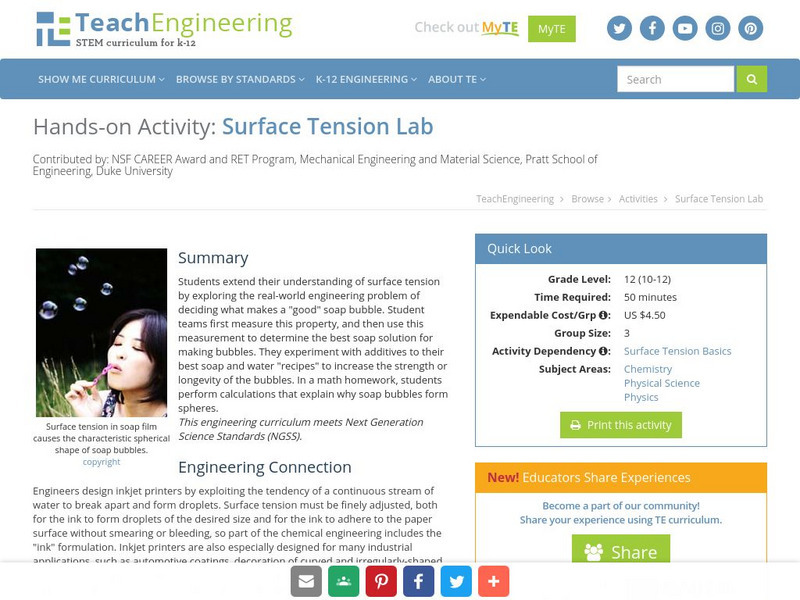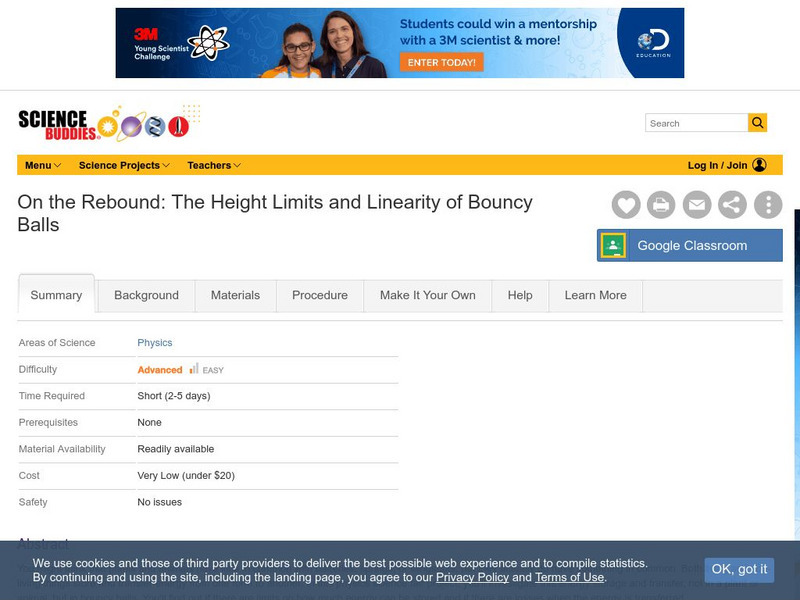SMART Technologies
Smart: Forms of Energy
Expose students to this introduction to several different forms of energy.
Concord Consortium
Concord Consortium: Van De Graaff Discharge
Charge up the Van de Graaff generator and drag the discharge wand close enough to form a spark. What happens to the electric potential energy when you charge the Van de Graaff and when the spark occurs?
Concord Consortium
Concord Consortium: How Can a Small Spark Start a Huge Explosion?
In this module Activity 4 investigates How are bonds formed and broken? This activity explores the relationship between energy and the formation and breaking bonds, using the ideas of energy transfer and conversion.
TeachEngineering
Teach Engineering: Surface Tension Lab
Students extend their understanding of surface tension by exploring the real-world engineering problem of deciding what makes a "good" soap bubble. Student teams first measure this property, and then use this measurement to determine the...
Science Buddies
Science Buddies: The Height Limits and Linearity of Bouncy Balls
You might think that plants and animals have little in common with batteries, springs, or slingshots, but they actually do have something in common. Both living and non-living things store and transfer energy from one form to another. In...
Museum of Science
The Atom's Family: Radiometer
Help Dracula find out about light waves by using a virtual radiometer.
TeachEngineering
Teach Engineering: Antimatter Matters
Antimatter, the charge reversed equivalent of matter, has captured the imaginations of science fiction fans for years as a perfectly efficient form of energy. While normal matter consists of atoms with negatively charged electrons...





